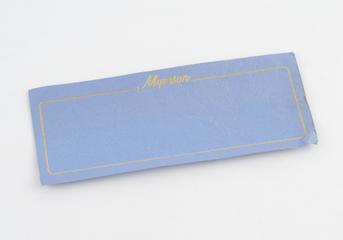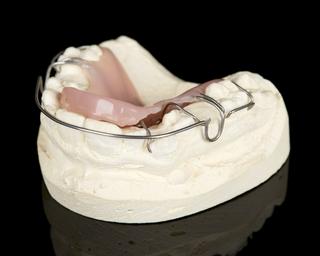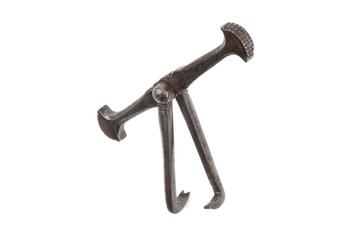










Partial upper denture for young person, vulcanite with porcelain teeth, English, 1910-1940.
Partial dentures like this one were designed to fill gaps left by missing teeth. Though we don’t know who these dentures belonged to or why they were needed, their small size suggests the user was a young person who for some reason was missing their incisors. Though uncommon in younger people today, for centuries losing permanent teeth was considered a natural part of ageing and removing them was often the only way to treat dental ailments. Though the first traces of partial dentures date from over a thousand years, these were made from human teeth. It was during the late seventeenth century that treating teeth and creating dentures became a possibility, but only for the rich. Before the 1840s, dentures were made of lead, ivory, or later, porcelain, though none of these materials fitted well, creating all sorts of problems for the wearer, mostly pain or loose dentures. With the discovery of vulcanisation – the process of manufacturing flexible, hardened rubber – by Charles Goodyear, dentists were able to create a more accurate mould and secure a good fit for the first time . ‘Vulcanite’ dentures were much cheaper than the earlier versions, which is why they became the standard until the 1920s when acrylic became the preferred material.
Details
- Category:
- Dentistry
- Object Number:
- 1981-1455
- Materials:
- plate, vulcanite and tooth, porcelain
- Measurements:
-
overall: 19 mm x 42 mm x 32 mm,
- type:
- dentures
- credit:
- Batchelor, R.




